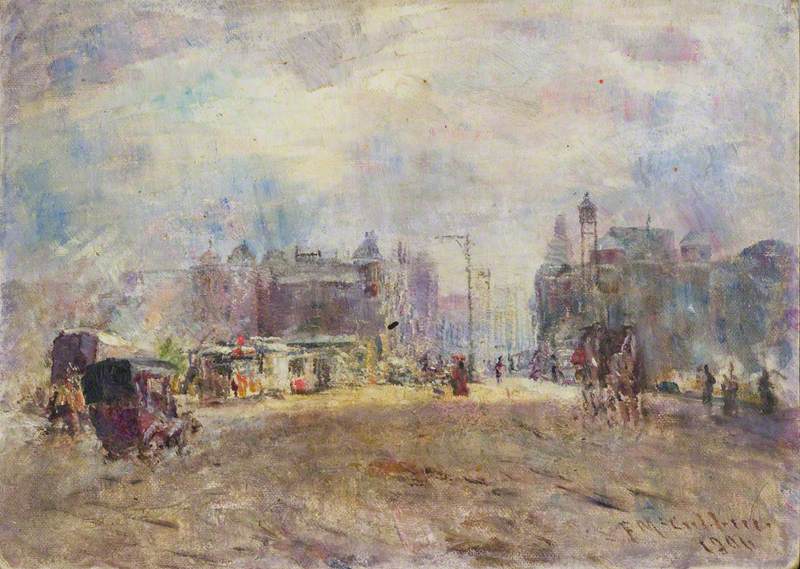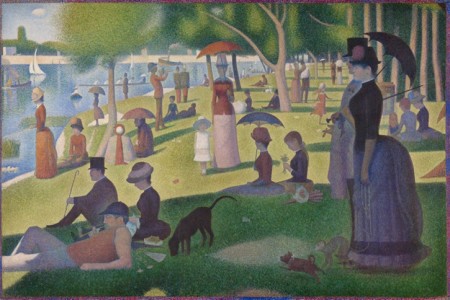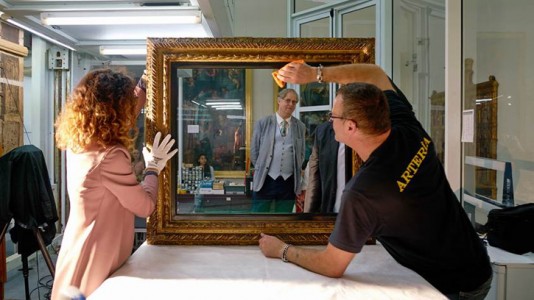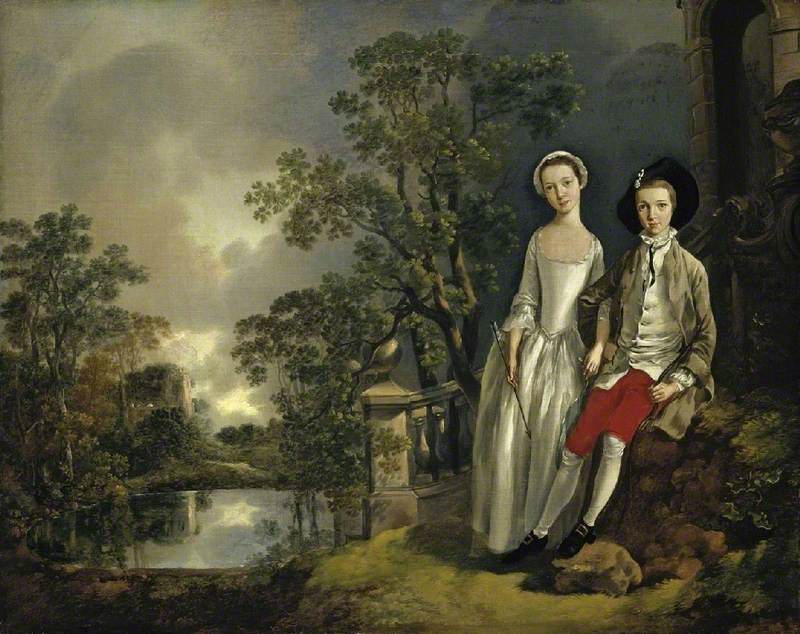Frederick McCubbin’s Swanston Street, Melbourne (1906), or Flinders Street, has special significance for the National Gallery of Victoria. Not only is it the work of one of Australia’s best-loved artists, it also depicts the future site of the NGV’s Australian collection. Painted in 1906, in the later stages of the artist’s career, it is both a document of the changing urban landscape of turn-of-the-century Melbourne and an important example of stylistic innovation.
McCubbin was one of the key proponents of Australian Impressionism. Along with associates including Arthur Streeton and Tom Roberts, he developed a heroic treatment of the Australian bush with its distinctive dry character and harsh sunlight, often including figures engaged in scenes of pioneer life. Having studied at the National Gallery of Victoria Art School under the romantic landscape painter Eugene von Guérard, McCubbin subsequently became president of the Victorian Artists’ Society from 1893 to 1896. His grand-scale triptych, The Pioneer (1901) is widely perceived as a masterpiece of Australian landscape and narrative, the culmination of McCubbin’s paintings on the theme of the early European emigres to Australia. First conceived at the time of Australia’s Federation, it also tells a universal human story of the journey through life. It remains one of the most visited works in our collection.
Swanston Street is a later work, on a much smaller scale, which relates a very different face of Australian history. Here, the changing urban landscape of Melbourne is rendered in swift, impressionistic brushstrokes that mirror the pace of modern life. McCubbin gives us a long view down one of Melbourne’s main thoroughfares. The wide Princes Bridge is populated by a horse-drawn vehicle on the right and an early motor car on the left – technological innovation is positioned at the heart of the emerging metropolis.
Flinders Street station, today identifiable by its large copper dome, was rebuilt between 1900 and 1910, and McCubbin’s painting dates to the midpoint of the rebuild, before the dome was installed. In 2002, the National Gallery of Victoria opened a new gallery, opposite Flinders Street station, at Federation Square, and so our Australian collection, including many of McCubbin’s greatest works, now occupies the scene of his painting.
McCubbin is an intriguing artist, both as a painter of changing life in Australia around the turn of the twentieth century, and as a technical innovator, who experimented extensively with new styles and techniques that reflected contemporaneous shifts in European art. But unlike his contemporaries, Tom Roberts, Arthur Streeton and Charles Condor, all of whom had undergone extensive early artistic training in Europe, McCubbin left Australia for the first time in 1907 at the age of 52, and so his version of Impressionism to this point is perhaps more particularly Australian in its origins and influences. With its loose brushwork and high-keyed palette producing subtle inflections of light and colour, Swanston Street sees the artist embarking toward the peak of his mature style.
Tony Ellwood, Director of the National Gallery of Victoria












